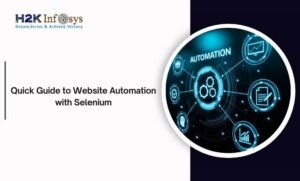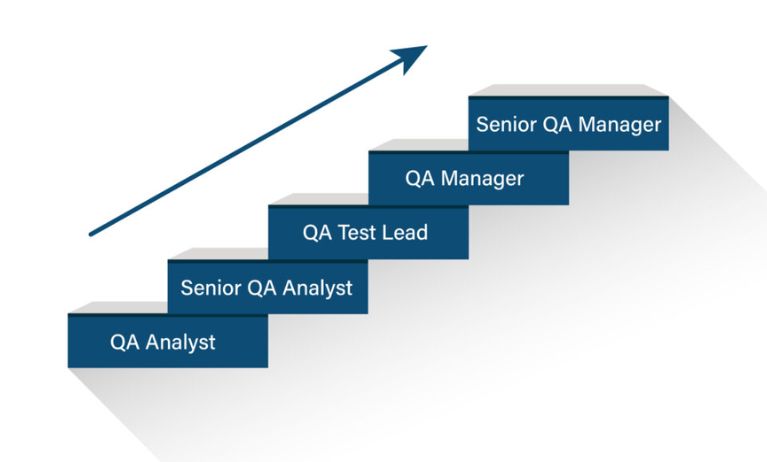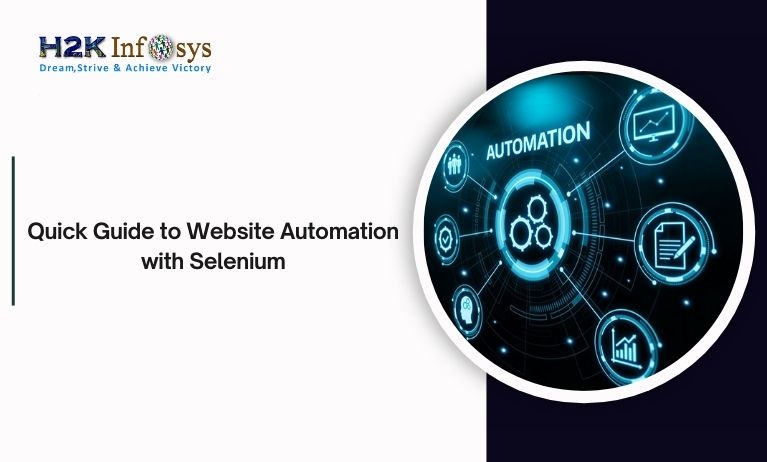Analytics is a red hot topic nowadays, which comes as no surprise given that we live in an era dominated by data. Business analytics tools like Microsoft Power BI have become essential for organizations to transform raw data into meaningful insights. However, many beginners often wonder: Is learning Power BI difficult? The answer depends on your approach. With the right resources, structured guidance, and a practical learning method, mastering Power BI is highly achievable, even for those without a technical background.
This guide will walk you through the fundamentals, ease your learning journey, and learn power BI you to and introduce comprehensive PowerBI Online Training Course designed to turn you into a proficient user.
Introduction to Power BI:
Power BI is a powerful business analytics tool developed by Microsoft that helps organizations collect, process, and visualize data in meaningful ways. It enables users to connect to hundreds of data sources, create customized reports, and share dashboards with team members or stakeholders.
Organizations across a wide range of industries from healthcare and finance to retail and beyond are increasingly relying on Power BI to drive data informed decision making. This versatile tool empowers users to analyze complex datasets, uncover meaningful trends, and present information through visually appealing and easy to understand reports.
One of the key reasons for Power BI’s widespread adoption is its accessibility; even individuals without a background in programming can quickly learn how to create impactful and professional quality reports. By mastering Power BI, you gain the skills needed to turn raw data into actionable insights, making it an invaluable asset in today’s data-centric business environment.
Why Should You Learn Power BI?
Before diving into whether learning Power BI is difficult, let’s look at the reasons why learning it can be a career game-changer:
- Growing Demand in the Job Market: The need for data professionals who can visualize data and generate actionable insights is at an all time high. Knowledge of Power BI is one of the most sought-after skills in roles like Business Analyst, Data Analyst, and BI Developer.
- User-Friendly Interface: Power BI offers an intuitive, drag and drop interface, which reduces the learning curve for those new to data visualization.
- Cost-Efficient Business Solution: Power BI is a cost effective alternative to more complex data analytics platforms, making it accessible for small businesses and startups.
- High Integration Capabilities: Power BI seamlessly integrates with a wide range of Microsoft products and other data platforms, including Excel, SQL, Google Analytics, and more.
Is Learning Power BI Difficult? A Breakdown of the Learning Curve
The difficulty of learning Power BI largely depends on your prior experience with data and analytics tools. Let’s break down the learning process for beginners:
The Initial Steps: Understanding Data Basics
For complete beginners, the first step is understanding basic data concepts like rows, columns, databases, and different data types (e.g., numerical, categorical). A PowerBI Online Training Course typically starts with these fundamentals before moving on to more advanced topics.
If you’re already familiar with Microsoft Excel, you’ll find Power BI’s interface and operations familiar. The software uses similar terminology and structures (tables, pivot tables, etc.), making it easy to transfer knowledge between the two.
Data Loading and Transformation
One of Power BI’s key features is Power Query, which allows users to connect, transform, and clean data before analysis. This might seem daunting at first, but with step by step tutorials in your PowerBI Online Training Course, you’ll learn how to:
- Import data from Excel, SQL, or other sources.
- Filter, sort, and clean data to ensure accuracy.
- Create relationships between datasets for combined analysis.
With a clear understanding of Power Query, you’ll have control over large datasets and their structure, which is essential for analysis.
Creating Visuals and Dashboards
Power BI shines in its ability to visualize data. Once you’ve loaded your datasets, you can use the drag and drop functionality to create visuals such as bar charts, line graphs, and pie charts. However, creating dashboards that effectively communicate insights takes practice.
A great PowerBI Online Training Course will cover how to:
- Choose the right visualizations for different datasets.
- Design interactive reports and dashboards.
- Customize visuals to enhance data storytelling.
Learning DAX (Data Analysis Expressions)
DAX is the formula language used in Power BI for creating custom calculations and measures. While this can be the most challenging part of learning Power BI, it is not impossible to master. A structured course will introduce DAX slowly, starting with basic formulas before moving on to complex calculations.
For example, a simple DAX formula to create a custom column could look like this:
DAX
Total Sales = SUM(Sales[Amount])
Understanding DAX will unlock advanced data analysis capabilities, but even without it, you can use many of Power BI’s built in functions to create meaningful reports.
Real-World Applications of Power BI
To further illustrate the power of this tool, let’s explore some real-world examples where Power BI has made a significant impact:
Retail Industry: Inventory Management
- A retail company used Power BI to create a dynamic dashboard that tracked inventory levels in real time. This allowed the company to reduce stockouts by 30%, leading to increased sales and customer satisfaction.
- Healthcare: Patient Data Management
- A healthcare provider used Power BI to visualize patient data and track treatment outcomes. This helped streamline patient care, leading to a 20% reduction in hospitalization rates.
- Finance: Budget Tracking
- A financial services firm used Power BI to automate their budgeting process, providing real-time insights into expenditure and cash flow, ultimately improving financial decision-making.
Power BI Learning Path: A Step by Step Approach
If you’re convinced that Power BI is a valuable skill worth learning but still feeling apprehensive about its potential complexity, you’re not alone. Many beginners worry about mastering the tool due to its wide range of features and data capabilities. However, with a structured approach, learning Power BI can be a rewarding experience.
To help ease your journey, here’s a step by step roadmap designed specifically for beginners, aimed at breaking down the learning process into manageable stages. By following this roadmap, you can gradually build your understanding of Power BI, from the basics of data visualization to advanced analytics, ensuring that you gain both confidence and competence as you progress.
This beginner-friendly guide will walk you through essential steps, such as setting up your Power BI workspace, importing and preparing datasets, creating your first visualizations, and progressively tackling more complex data models.
Whether you’re starting from scratch or have some foundational knowledge, this roadmap will ensure that you stay on course and achieve mastery in a structured, step by step manner, transforming your apprehension into a newfound capability that will enhance your professional skill set and open up a world of opportunities in data analysis.
Step 1: Enroll in a Structured PowerBI Online Training Course
A structured learning environment provides you with the resources, mentorship, and community support necessary to master Power BI. H2K’s PowerBI Online Training Course is designed to take you from a complete beginner to a confident Power BI user through interactive lessons, real-world projects, and quizzes.
Step 2: Familiarize Yourself with the Interface
Spend time exploring the Power BI interface. Click around, open sample reports, and watch short tutorial videos to build your comfort level with the tool.
Step 3: Start with Data Loading
Practice loading simple datasets (Excel sheets, CSV files) into Power BI. Learn to clean and transform this data using Power Query.
Step 4: Build Your First Report
Use sample datasets to create basic reports. Experiment with different visuals, such as bar charts and line graphs, and learn how to customize them.
Step 5: Learn Basic DAX
Begin with basic DAX formulas to create calculated columns and measures. Use online resources and tutorials to practice common DAX functions.
Step 6: Create a Comprehensive Dashboard
Combine multiple reports and visuals into an interactive dashboard. Focus on storytelling—what insights are you trying to convey?
Step 7: Keep Practicing
The key to mastering Power BI is practice. Continue working on real-world projects and datasets to solidify your understanding.
Conclusion:
Learning Power BI may appear daunting at first, especially if you’re new to data analysis or business intelligence tools. However, with the right guidance, dedication, and consistent practice, you’ll soon discover that mastering Power BI is not only achievable but also an incredibly valuable skill in today’s competitive job market. Its user-friendly interface and intuitive design, paired with its robust data analysis and visualization capabilities, make Power BI accessible for beginners while remaining a highly effective tool for experienced data professionals seeking to drive impactful insights.
To accelerate your learning journey, enrolling in a Power BI Online Training Course, such as the comprehensive program offered by H2K Infosys, can make all the difference. Through hands-on experience, personalized guidance, and instruction from seasoned industry experts, you’ll build a solid foundation in Power BI.
This structured approach ensures that you grasp essential concepts while learning how to apply them in real-world scenarios. Whether you’re just starting out or looking to enhance your existing skills, the training will fast-track your path to becoming a proficient Power BI expert, equipping you with the confidence and expertise needed to succeed in today’s data-driven landscape.
Key Takeaways:
- Learning Power BI is achievable: With the right resources and dedication, even beginners can become proficient.
- User-friendly interface: Power BI’s drag-and-drop functionality makes it easy for non-technical users to navigate.
- Practical applications: From retail to healthcare, Power BI is used across industries to drive decision-making.
- Structured learning path: A comprehensive PowerBI Online Training Course is the best way to ensure success in mastering this business analytics tool.
Call to Action:
Ready to take the next step? Enroll in H2K Infosys’s PowerBI Online Training Course today and unlock the potential of data-driven decision-making. Empower yourself with the skills to transform raw data into actionable insights and stand out in the competitive business analytics field.


























One Response